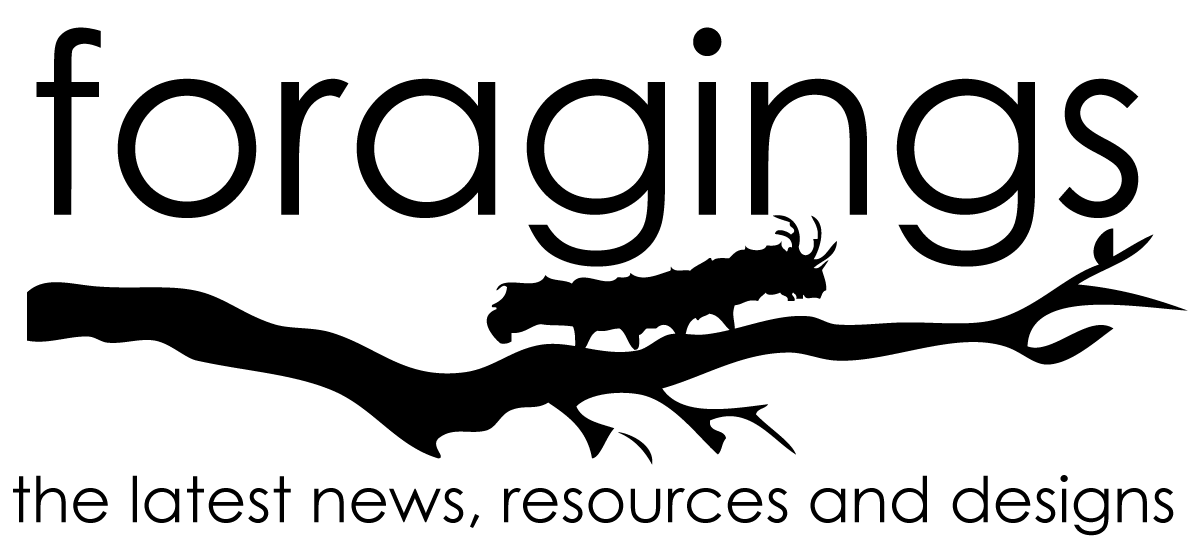News
- Access to wildlife should be a right, not a privilege:: An interesting article from the Guardian which discusses “that every child and young person has the right to grow up and live in a high-quality, wildlife-rich environment with ready access to the physical and mental health benefits, developmental advantages and play opportunities it affords.”
- Do not harm invasive species that pollinate, study warns:: This article details a fascinating study which found that many invasive pollinator species which have damaged native pollinator populations should not necessarily be removed or eradicated because they often take over the role of the pollinator they eliminated.
- Wild flowers are nature’s anarchists. Yet today even weeds must conform:: This wonderful article discusses wildflowers as “nature’s flotsam, survivors, anarchists, freelances, defying the horrors of modern life.” The author describes his search not in the meadows and wildlands but instead as “urban geeks are scrambling over rubbish tips and railway sidings in search of vagabond exotics.”
- Your City is Full of Bees:: An interesting article which features the variety of native bees, many small and less visible than the honey bee, which are found in our cities.
- Tiny saviors in our backyard:: Also on the topic of native bees, this article from the University of California discusses how many native bees are effective pollinators and some are even better at pollinating than the honey bees.
- San Francisco Bay conservation 2.0:: This article on the San Francisco Chronicle features Emma Marris, author of Rambunctious Garden: Saving Nature in a Post-Wild World and a new viewpoint about conservation. “Rather than struggling to restore nature to some impossible historical ideal, she says, we should work with the mixed-up world we’ve got to try to make it better.”
- For the Love of Bugs: Educators Make Insects Their Cause:: Featured in this article are two women who are best known as the ‘Bug Chicks’ and how they turned their efforts from studying entomology to environmental science education.
- Look who showed up for dinner:: Snowy Owls have been making news lately as they are being found further south than their normal yearly range and some of them have been seen in urban areas like this one in West Seattle.
- The Different Personalities of Urban and Rural Song Sparrows:: This article features a recent study which found that song sparrows have different traits depending upon whether they live in the city or not and found that urban males are more bold and aggressive than their rural counterparts.
- Urban Bird Behavior May Divide a Species:: We know that our activities influence wildlife, but a new study suggests that cities influence birds so much that European Blackbirds may have altered their behavior to the point that it’s possible they may end up as two separate species.
- Wildlife in the dark:: At night there is another set of wildlife species in cities including owls, foxes, deer and moths as described in this article.
- The Disappearing Habitats of the Vaux’s Swifts:: This Smithsonian article discusses how Vaux’s Swifts rely on chimneys along their migration routes and features a look at the roost in Monroe, Washington, which I visited this summer.
- A Feathered Nest:: This article describes a study in Texas which found that counting birds could analyze ecological and economic values in a neighborhood and suggests that the results of the study indicate that the more uncommon bird species found, the higher the sale price of a house.
- Urban ecology model ‘needs to change’:: Historic growth of cities was slow, but today cities grow in very different ways. Researchers suggest that “ecologists should move beyond the use of aggregated urbanisation measures and consider a comprehensive set of driving factors selected based on the characteristics of the study area and ecological question of interest”.
- More Green, More Birds, More Diversity:: A new study finds that “on average, up to three times more species and four times more birds were found to use the green roofs.”
- Profiles of Spontaneous Urban Plants:: This is a fascinating article about a project which “seeks to make urban interventions that reveal the nuances of our urban landscape in subtle, poetic ways that provide clues to the complex ecology of cities”.
- Citizen scientists help reveal bumblebee decline:: Citizen science projects aren’t always positive, but even when they find negative information, it’s very valuable and shows the importance of citizen science.
Resources
- Wildlife Ponds:: The Sussex Wildlife Trust has several valuable resources on their website about wildlife ponds including a factsheet on creating a pond, a troubleshooting factsheet and finally a maintenance factsheet.
- Raptors in the City:: This post on the Northwest Nature Notes blog features various urban raptors and how many of them are now hunting or living in our cities.
- True Green: 21 Ways to Plant a City:: This list is a summary of a talk by Richard Louv and features tips such as creating butterfly zones in neighborhoods, encourage urban wildlife and use biophilic design.
- Long winter’s nap:: This interesting post at the Next-Door Nature blog discusses winter rest of wildlife, sometimes in hibernation, sometimes in torpor and includes many urban species.
Design
- Tower of Nests:: The Animal Architecture blog has a post featuring a very interesting design which aims to integrate human and animals inhabitants in a high rise building.
- Candlestick Point wetland reclaimed as key habitat:: A seven acre site which was recently home to warehouses is now a tidal bay and island designed for bird habitat along the San Francisco shoreline.
- Bee and Lizard habitat bench for the AZ-Sonora Desert Museum:: This new design from Zen-Industrial, an artist who creates ecological sculptures, contains a wooden bench for humans, a metal box filled with rocks for reptiles and wooden pieces with holes for solitary bees to nest in.



